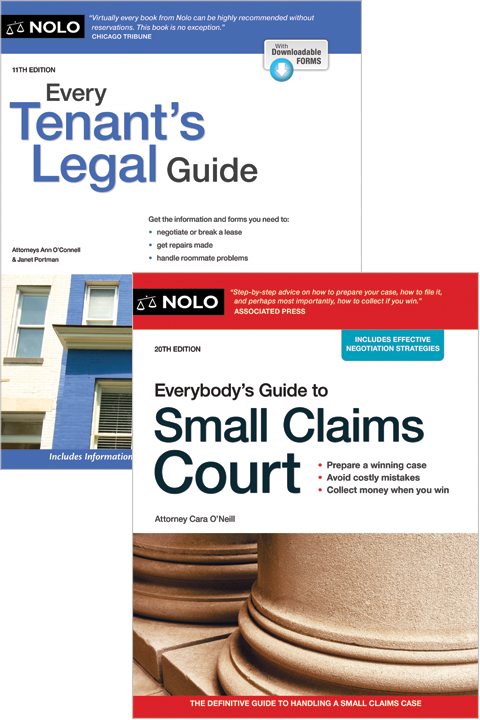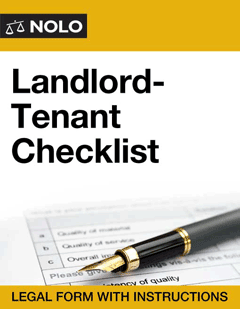Rent-to-own agreements might be a good option for tenants who struggle to afford a large down payment or who don't immediately qualify for a home mortgage.
As the price of homes rise, it's harder and harder for the average American to become a homeowner. The main barriers to homeownership include the large sum of money required for a down payment, high mortgage interest rates, and failure to qualify for a mortgage.
For some would-be-buyers, entering into a rent-to-own agreement might be the way to overcome some of these hurdles.
What Is a Rent-To-Own Agreement?
Rent-to-own agreements, also called "lease-to-own agreements" or "lease-options," are rental leases that also give the tenant an option to purchase the rental property. Typically, single-family houses are the subjects of rent-to-own agreements, but they can also be used for other types of residential property, such as condos and duplexes.
A rent-to-own agreement can benefit both buyers and sellers. It provides a potential route to homeownership for tenants who might not easily qualify for a mortgage, and allows a landlord to secure a possible buyer without having to market the property and hire a real estate agent.
What's in a Rent-To-Own Agreement?
A rent-to-own agreement often consists of two agreements:
- a rental lease agreement, and
- an option to purchase.
These may be incorporated into one document or prepared and signed as two separate documents.
What's in the Lease or Rental Agreement
In a rent-to-own agreement, the title to the house remains with the landlord until the tenant exercises the option and purchases the property. In other words, the starting point of this kind of an arrangement is a regular tenancy, not a house purchase transaction.
That means the underlying agreement in a rent-to-own arrangement is similar to a regular lease agreement between a landlord and a tenant: It will include terms such as the duration of the lease period and the repair and maintenance responsibilities of landlord and tenant.
Rent
Just as in a standard lease or rental agreement, the tenant with a rent-to-own arrangement has a duty to make timely and exact payments of rent. However, in a rent-to-own arrangement, rent payments are often set higher than they would have been had the transaction been a standard lease agreement. This is because an agreed-upon percentage of the monthly rent is typically placed into an escrow account, so that it builds up toward a down payment to be credited against the purchase amount.
It's the landlord's duty to set aside the agreed-upon percentage of rent. The landlord either reserves the escrow funds and refunds the tenant upon purchase of the home, or applies a percentage of the rent payments toward the principle of the house. In this manner, the tenant builds equity in the house throughout the duration of the lease agreement.
Repairs
Unlike with a traditional lease, in which the landlord is typically responsible for making all repairs, rent-to-own tenants usually repair the rental property at their own expense.
Many landlords and tenants consider this a fair bargain since, presumably, the tenant will eventually own the home. The tenant has an incentive to keep it in good repair; and can also customize it to personal tastes, without worrying about the landlord objecting to purple walls, for example. The tenant could even put in higher-quality materials than the landlord is likely to spring for (though this is unlikely in a situation where the tenant is busily saving up to buy the entire house).
Every rent-to-own agreement is different, though, so be sure to read the terms of your specific agreement to see who is responsible for maintenance, repairs, and upgrades.
Other Lease Terms
Until the tenant exercises the option and purchases the rental property, the premises are owned by the landlord. So, in addition to making repairs, the tenant must also comply with all other duties outlined in the lease.
This means that the tenant must not keep pets if the lease prohibits them, must not house unauthorized residents, must not engage in criminal activities, and must not do anything else that is forbidden by the lease.
If the tenant violates the lease, the option will become null and void. That means that the tenant will likely forfeit both the option fee and the percentage of the monthly rent payments, depending on the terms of the option-to-purchase agreement. Any repairs or improvements the tenant has made to the house will likely not be reimbursed by the landlord.
What's in the Option to Purchase Document
An option to purchase grants the tenant an option (right) to buy the rental property within a specified period of time in exchange for a fee (option fee). The fee can be:
- a flat fee paid when the option is signed or
- in the form of a higher-than-market rent (some of which is applied to the house purchase).
Because so much is at stake for both landlord and tenant in this arrangement, it is crucial that the option to purchase covers all important terms and conditions, such as:
- how long the rental period will last (in other words, how long the renter has to exercise the option)
- how much of the rent will be applied to the purchase price
- whether the remaining amount will be owner-financed or the buyer will obtain funds independently
- the purchase price, and
- who will pay for closing costs.
What to Do Before Signing a Rent-To-Own Agreement
Even though the tenant might not go through with the purchase, it's important to treat the agreement as if it will play out all the way through a completed purchase of the home. That means that the tenant should perform due diligence on the house in a manner similar to what they'd do if they were buying the house immediately.
Before signing a rent-to-own agreement, tenants should always:
- Order an appraisal. The future purchase price of the home is often agreed upon at the time the rent-to-own agreement is signed. An appraisal will ensure that the tenant is paying a fair price for the home.
- Inspect the premises. A thorough professional inspection can determine whether the tenant will need to make future major repairs such as those to restore leaking roofs, broken HVAC and heating units, or clogged sewage drains, and help the tenant make the decision of whether entering into the agreement is sensible.
- Run a title search. A title search will reveal whether the seller has clean title to the property—in other words, whether the seller truly owns the property free and clear of any liens or other issues and has the right to sell the property in its entirety.
In some states, landlords who lease a home with an option to purchase must also disclose important information about the condition of the property. Check your state laws on required real estate disclosures.
Because rent-to-own agreements are complex—after all, you're signing a lease as well as a document that might lay out all the terms of a home purchase—it's a good idea to have a local real estate attorney look over the agreement before signing.
Pros and Cons of Rent-To-Own Agreements
Even a properly-constructed rent-to-own agreement can pose risks—and rewards—for both tenants and landlords. You'll want to weigh the pros and cons before signing on the dotted line.
Pros and Cons for Tenants
Under a rent-to-own agreement, the tenant isn't legally obligated to purchase the house (but be sure that the contract you're signing isn't a lease-purchase agreement—one that requires you to purchase the property at the end of the lease term). This flexibility is often considered one of the best aspects of entering into a rent-to-own agreement. But there are risks that need to be weighed against that flexibility.
| Pros | Cons |
| Affords the opportunity to "try out" a home with a low commitment | Possible delay in signing a lease while doing due diligence on purchase option (such as getting an inspection and appraisal) |
| Creates a forced down-savings plan | Might pay more monthly in rent than market rate |
| Allows more time to improve credit to qualify for a mortgage | Locked-in purchase terms might end up being worse than market terms at the time the option must be exercised |
| Leaves open the option of walking away if the tenant decides the house isn't a good fit | Loss of the option fee and money paid in rent toward down payment if the option isn't exercised OR if the tenant violates the lease |
Pros and Cons for Landlords
Although a rent-to-own agreement can create a bit of uncertainty for a landlord, this concern is often outweighed by the fact that if the tenant decides not to exercise the option, the landlord can keep the money that the tenant has paid for the option.
| Pros | Cons |
| Brings in income in a slow sales market or buyer's market | Locks the landlord into having tenants for the rental term |
| Provides a reliable, long-term tenant | Prevents the landlord from putting the property on the market during the term of the agreement |
| Removes many of the duties to repair the rental | Requires the landlord to apply money received towards down payment if the tenants decide to exercise the option |
| Enables collection of a higher monthly rent/cash flow | Creates uncertainty for the landlord during the term of the agreement because what happens next is up to the tenant |
How to Find a Rent-To-Own Property
It's often difficult for renters to find landlords who are offering a rent-to-own arrangement. Most landlords are in the business for the long-run, hoping to make money off of not only rents but also any appreciation on the real estate itself.
If you're looking for a rent-to-own option, it's best to contact a landlord directly and ask if the arrangement is possible. Also, if real estate sales are sluggish in your area, it might be worth contacting a local real estate agent and asking if they know of any landlords who haven't been able to sell. Landlords whose properties are languishing on the market might be willing to entertain a rent-to-buy agreement.
Finally, check the internet for websites listing rent-to-own properties. For example, HomeFinder allows you to search for listings that are advertising as rent-to-own. Consider also reaching out to people selling for-sale-by-owner (without an agent), even if they're not listing the property specifically as rent-to-own.
Talk to a Lawyer
Need a lawyer? Start here.
How it Works
- Briefly tell us about your case
- Provide your contact information
- Choose attorneys to contact you
- Briefly tell us about your case
- Provide your contact information
- Choose attorneys to contact you



